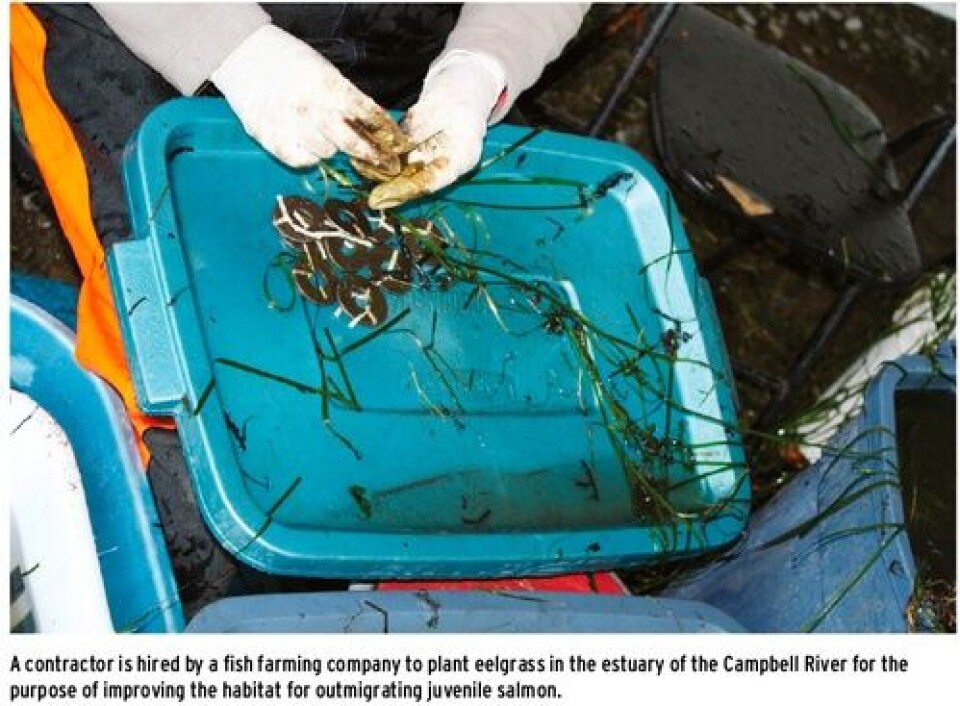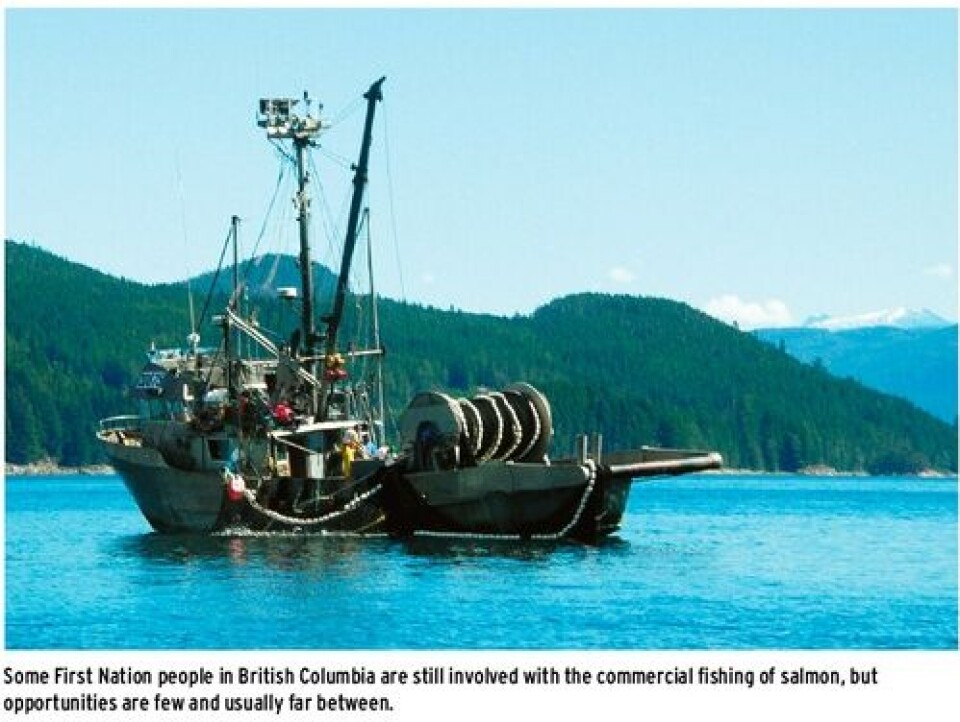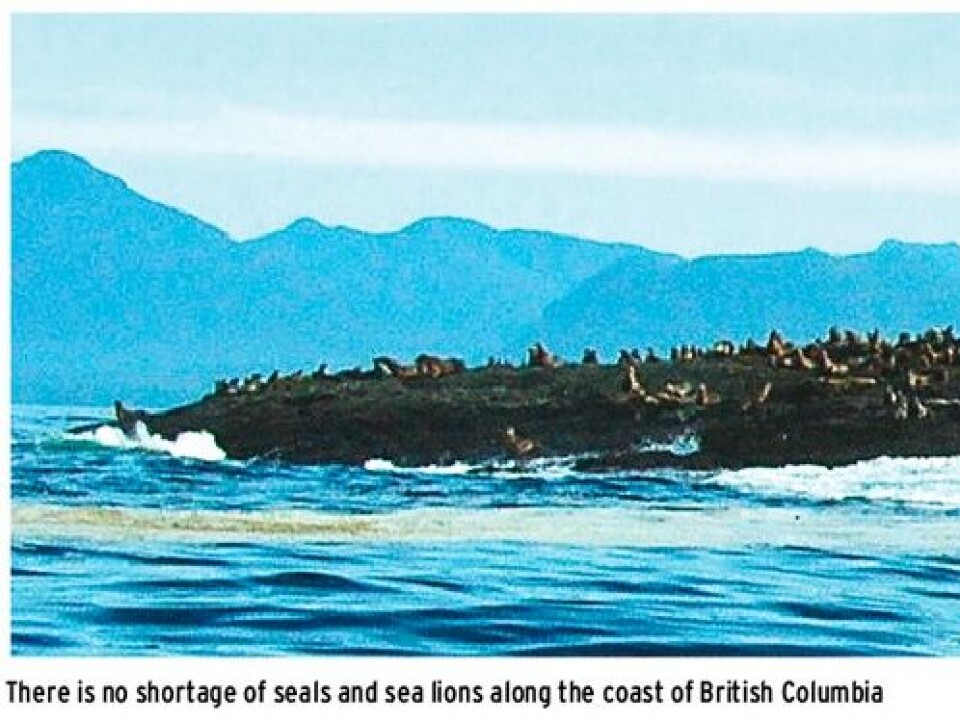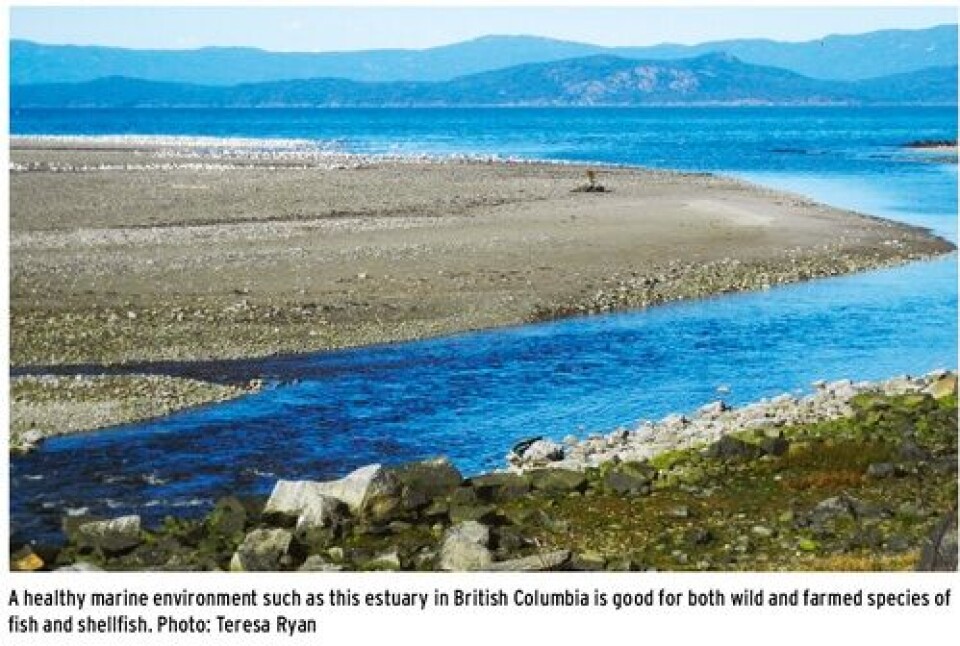The use of Indigenous Knowledge Systems in Fisheries Management
Posted by Teresa Ryan. Teresa Ryan is presently a PhD Candidate in the Institute of Resources, Environment and Sustainability at the University of British Columbia, Vancouver. Teresa has a B.Sc. in Fisheries/Aquatic Ecology and a M.Sc. in Resource Management.

In our efforts to manage various aquatic resources, we depend on ecological knowledge systems but rarely have an opportunity to calibrate that knowledge with the integrity of its efficacy. Short term gains are always expected but long term outcomes typically dominate our need for accuracy. We tend to rely on forecasts and projections that have limited precision and generally exceed our expectations in one-off occurrences, if at all. More often we rely on relative occurrences of general proximity to the nearest objective we can hope to achieve for that short term gain. Humanity has come to expect that knowledge will fill the interminable gaps between expectations and results and we are bewildered when nature determines an alternative and often unavoidable outcome contrary to the expectation. We measure the difference in evaluating risk scenarios but still fail to grapple with the inevitable failure of recognizing human vulnerability to misjudge the events and the outcomes of nature’s cyclic dominance over our perceptions of what we think should occur. It is more convenient to refer to a stochastic situation, randomness interfering with predictability, than it is to perceive possible error. The aquatic environment is where we find our greatest consternation, especially in regard to fish and their habitat.
The indigenous knowledge systems (also known as Traditional Ecological or Aboriginal Traditional knowledge, etc.) are applied systems of knowledge based upon thousands of years of observations. These knowledge systems can provide a level of integrity that is calibrated with repetition of observations over a variety of time scales. The differences between indigenous knowledge systems and science-based knowledge systems are found in the manner that knowledge is stored, transmitted, and applied. The indigenous knowledge systems consist of linkages between the cultural paradigm in which it originates and the ecological setting in which it operates. The indigenous people are the repositories and practitioners for the expressions of knowledge that are guided by the wisdom of their ancestors, and shaped by their beliefs, spirituality and cosmology. These are guidelines for the appropriate responses to environmental situations where the knowledge is brought forth and applied based on experience. Indigenous people share their experiences by communicating in the social setting of their peers based on their expertise and shared language. Each community has its experts for specific roles of activity. The collection of these experts strengthens the ability to coalesce their experiences into a more holistic frame of reference for their ecological surroundings. Their epistemological (i.e., how it is known) framework is the foundation that distinguishes one of the critical differences between indigenous knowledge and science-based knowledge. How knowledge is acquired through learned experiences in a social setting that has endured for thousands of years in the same environment begins within the cultural paradigm.
The ontology (i.e., what is known) of indigenous knowledge is often the subject of pursuit to engage exchange between indigenous and science-based knowledge forms. Some success has been achieved between engaging exchanges but the caveat is that indigenous people were directly engaged. The Inuit contributed their expertise on Hudson Bay eider (Somateria mollissima sedentaria) that improved the science-based population estimates. Without the Inuit knowledge, the scientists were not aware of winter distribution of eiders hidden in pullait (ice formations) formed by eiders, and nigajuk, ice-trapped eiders (Nakashima 1993).

Indigenous knowledge systems are heterogeneous with some ontological similarities depending on the proximity of groups of people and specific resources. What is known in one group may be similar to what is known in another group but how the knowledge is applied is specific to unique cultural and ecological settings. The same observation applies also to science-based knowledge. What is known about halibut (Hippoglossus sp.) reproduction is not likely to be the same as sturgeon (Acipenseridae) reproduction but eggs will be fertilized, incubated and grown based on what is known about each species. One of the main challenges engaging exchange of indigenous knowledge in its systemic nature makes it difficult to randomly extract bits and pieces. What is known in indigenous knowledge is intimately linked to how it is known, transmitted, and applied.
The governance of how aquatic resources are managed and the knowledge used to inform decisions has changed (Ryan 2008). Aboriginal (indigenous) people desire to be part of the decision making process that affects their access to resources they continue to rely upon for their health, well-being and wealth. In Canada, a legislated system of resource governance has been imposed over the areas that were traditionally managed through ancient indigenous societies. This imposed system was instrumental in removing wealth generation entirely from the indigenous use of aquatic resources. It also created a dependency system for “well-being” that marginalizes indigenous people to a “subsistence” level use of aquatic resources. The incentives to engage exchange of knowledge do not exist as a result of these impositions. Some indigenous knowledge was exchanged in the past before the realization of the implications.
The first instance of indigenous knowledge exchange regarding wild Pacific salmon (Oncorhynchus sp.) and other fish resources occurred in some of the first colonial encounters, particularly when the newcomers became hungry. Salmon was readily available for trade throughout the Pacific Northwest coast because of long established use of the resources over thousands of years from the sea and rivers.
The use of salmon in river watersheds is based on the locations of the spawning populations, those locations to which salmon return to spawn only once and then die. The Pacific Northwest region contains six different species of salmon – Chinook (also known as King, Tyee, or Spring; O. tshawytscha), coho (also known as silver; O. kisutch), sockeye (also known as red; O. nerka), pink (also known as humpy; O. gorbushca), chum (also known as dog salmon; O. keta), and steelhead (also known as rainbow trout; O. mykiss). Other names also exist for these fish, some English, and some names from the indigenous languages. The common name for Chinook is the only one capitalized because it is the actual name of a tribal group of people from the lower Columbia River.

The first five listed above are typically related to various fisheries harvests in large volumes while steelhead is mostly pursued one fish at a time. Coho salmon fisheries have been curtailed throughout its range due to severe declines. Sockeye salmon fisheries are usually the topic of sensational headlines in current events, and often preferred by the consuming public for its vibrant red flesh. Connoisseurs of salmon appreciate the delicate nuances of difference among all the species attributed to the content of their natural oil. The Atlantic salmon (Salmo salar) is a distant cousin to the Pacific salmon with closest resemblance to steelhead in the manner they reproduce. The other five have likely evolved during multiple periods of glaciations causing some fish to be stranded during glacial events. Kokanee is a land-locked version of sockeye salmon. All six species of salmon reproduce in freshwater before migrating out to sea for the majority of their life. The location of these fish in the marine environment was likely the second bit of indigenous knowledge expressed to eager entrepreneurs. The timing of their journey throughout the Northeast Pacific ocean is based on a sequence of their growth following an ancient ocean path before returning to their natal rivers to spawn. Each of the Pacific salmon has different life history strategies and differing schedules of their reproductive cycle. The location of the spawning sites was likely the third bit of indigenous knowledge expressed to those who might have been interested in learning about the ‘science’ of these fish. After these main pieces of information were made known, very little indigenous knowledge has been engaged or divulged. The expression of these pieces of information – introduction to salmon, marine location and timing, and spawning locations - had profound effects on the ability for indigenous people to continue their use of these treasures as regulations increasingly separated the users from the resource. Commercial salmon fisheries in British Columbia developed intensively in about 1910 even though the canneries had been fishing fairly hard for about 20-30 years. The first commercial fleets consisted mostly of Aboriginal people because the growing urban populations simply did not fully participate in the activity that was considered more rural. This would change however as technology advanced in vessel power while at the same time fisheries in other international locations were dwindling. Some indigenous people (and scientists too) were advocating caution during the high exploitation of the cannery era, and continued to sound warnings during the height of commercial salmon fisheries. The costs associated with commercial fishing, including federal regulation costs, started displacing Aboriginal commercial fishers right out of the fishery, a trend that has not stopped. Indeed, all commercial fishing is now so constrained that very few can realize any reliable profit. The fisheries that supported indigenous societies in B.C. and the rest of the Pacific Northwest for thousands of years have dramatically changed and some have nearly disappeared within a century. The limited use of resources for subsistence, although painfully limited, has provided an avenue to maintain the continuity of indigenous knowledge and its transmission. The desire to apply indigenous knowledge for conservation of aquatic resources continues to flourish however the mechanism for cross-cultural knowledge dialogue is absent. A collateral loss of applying indigenous knowledge is the result of imposed regulations to exclude indigenous people from access to resources. What will be the result of this loss? This is a transformation of change that is still in progress with an opportunity to change the outcome if steps are taken soon.

A fundamental attribute of indigenous knowledge systems is maintaining balance. For example, having too much of one predator will disrupt the prey populations rapidly. California sea lions, a predator of salmon, were not known in Juan de Fuca Strait before their relatively recent appearance. Seal populations are increasing unchecked by the former periodic hunting. These critters are ‘protected’ because of public perceptions however failing to address this imbalance will cause increased predation on salmon. Indigenous knowledge systems have much to offer in our understanding of complex ecosystems. For example, knowing how freshwaters flow into an estuary is valuable to the knowledge of estuarine functions. The location of freshwater lenses in the estuary has an effect on the location of organisms in and under it. Specific plant communities are found in areas of freshwater influence that provide habitat for juvenile salmon during high tide events. These wetland obligate plants are harvested for material culture purposes such as basketry. This example brings up an important attribute of where indigenous knowledge is located by practitioner which in this instance is from the perspective of a basket weaver’s knowledge of material harvest.
Many other examples exist, particularly for the use of resources at the terrestrial-aquatic interface. Some Aboriginal groups used to periodically manipulate these habitat areas to increase available habitat specifically for juvenile salmon. These activities are no longer ‘allowed’ by the imposed regulation. The full costs of these changes have yet to be fully expressed, and unfortunately climate change is exacerbating the environmental challenges.
It is the terrestrial-aquatic interface function that has suffered the greatest impacts of habitat change. An opportunity exists to engage Aboriginal people to apply indigenous knowledge to understand this dynamic interface. The estuary is the area that juvenile salmon rely upon for their preparation to their adult life at sea. The near-shore region is also the preferred area for aquaculture net-pen facilities. If the environment no longer supports wild juvenile salmon then it will not likely support any juvenile salmon.
This is not a prediction, projection or forecast – clearly no data have been presented. The inability to tend eelgrass beds, as was formerly done by Aboriginal people, is one of the examples of collateral losses for maintaining the application of indigenous knowledge regarding the conservation of wild salmon and their environments. It seems reasonable to conclude that indigenous knowledge has much to offer in understanding ecological systems.
References Nakashima, Douglas J. 1993. Astute Observers on the Sea Ice Edge: Inuit knowledge as a basis for Arctic Co-Management. In: J. T. Inglis (ed.) Traditional Ecological Knowledge: Concepts and Cases. International Program on Traditional Ecological Knowledge and International Development Research Centre. Canadian Museum of Nature, Ottawa, ON.
Ryan, T. 2008. “Skuu see”: Integrating forms of knowledge. In David Castle and Keith Culver (eds.), Aquaculture, Innovation and Social Transformation. UK: Springer.






















































